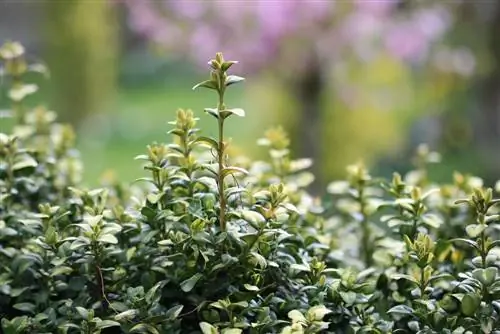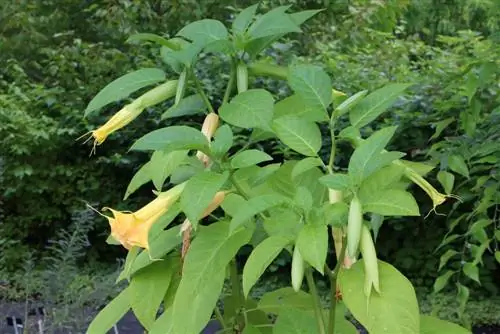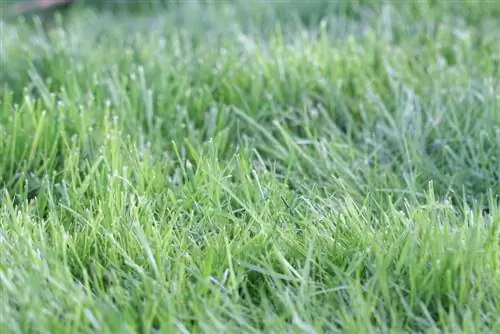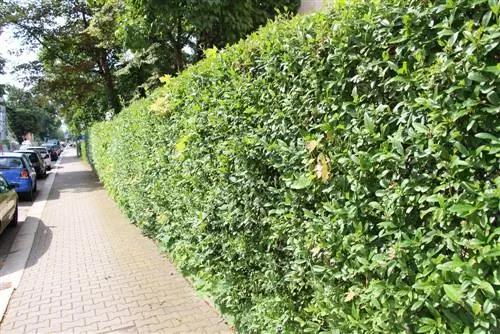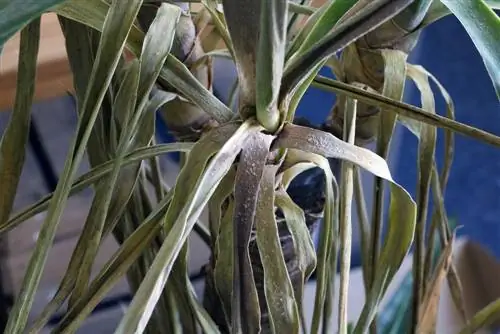- Author admin [email protected].
- Public 2023-12-17 03:39.
- Last modified 2025-06-01 06:48.
Box trees also get sick. Mushrooms in particular cause problems for them with great regularity. Fungal infestation is not something to be trifled with. In the worst case, it can lead to the death of the affected boxwood. For a garden owner who wants to enjoy his little tree for a long time, it is therefore crucial to recognize diseases such as boxwood wilt in good time and then combat them.
Types of disease
Box trees essentially have to contend with two types of diseases - wilting and shoot death. The wilt can be divided into the Phytophthora wilt and the Fusarium buxicola wilt. Anyone who wants or needs to deal with boxwood diseases has to deal primarily with these three diseases. They are by far the most common, while others play almost no role. What is interesting is that these three boxwood diseases are caused by fungi. Fungal infestation is relatively common in boxwood trees. It is usually only made possible by incorrect location conditions or incorrect care. Since fungal infestation is very difficult to combat, you shouldn't let it get that far and focus on prevention.
Preventive measures
Prevention is better than cure. This also applies to boxwoods. The likelihood of fungal infestation can be significantly reduced through a whole range of measures and precautions. These are:
- never fertilize with nitrogen fertilizer
- give preference to organic fertilizer such as compost
- always water from below and never from above
- Avoid waterlogging and possibly lay drainage
- Make sure the soil is rich in humus and well-drained
- If the pH value is below seven, be sure to add lime
If you take these points into account and implement them consistently, boxwoods are usually well prepared to grow and thrive without problems.
Tip:
Always disinfect cutting tools thoroughly before and after cutting the boxwood. When cutting with dirty tools, fungus can easily occur.
Illness pictures
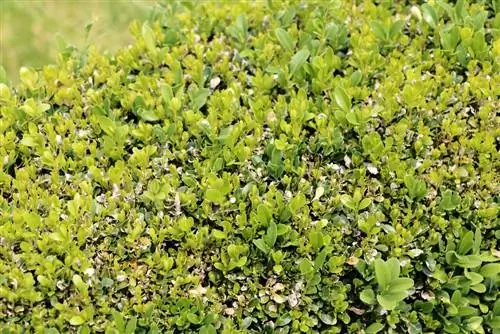
If the boxwood has become ill despite all preventative measures, the first step must of course be to determine exactly what the disease is. As already indicated, you can in principle concentrate on three diseases. In order to actually recognize them, you have to take a close look at an affected plant. It usually shows typical symptoms of illness or damage that allow a clear classification. So before fighting, there is first control.
Tip:
Box trees should be checked regularly for changes in their appearance. This helps to detect possible illnesses early.
Boxwood shoot dieback
Shoot death is probably the most feared of all boxwood diseases. It is relatively easy to recognize because orange and brownish spots form on the green leaves. As the disease progresses, these spots unite to form a closed area. Combat is only possible at a relatively early stage. Once spore deposits have formed on the underside of the leaves and the shoots have black longitudinal stripes, it is too late and control is impossible. Then the only solution is to destroy the boxwood as quickly as possible.
Phytophthora wilt
Whenever we talk about boxwood wilt, it should actually be mentioned that there are different types of wilt. Phytophthora wilt is one of the most common. You can recognize them by the fact that the leaves turn light green and curl up. In addition, the tree grows extremely poorly or no longer at all. The cause of this is root rot caused by a fungus. Waterlogging usually allowed the fungus to penetrate.
Fusarium buxicola wilt
Fusarium buxicola wilt is the second very common type of wilt on boxwoods. It manifests itself in the fact that leaves and shoots die suddenly. Most of the time, more or less large parts of the tree are affected, while other parts continue to grow.
Combat
To say it straight away, fighting fungal diseases like the one described above can be a challenge. In an advanced stage, only the use of special fungicides from specialist retailers usually helps. However, in an early to very early stage, the following measures may also be sufficient:
- Removing all affected leaves, shoots and branches
- strong pruning right into the he althy wood
- Replacement of the top soil layer
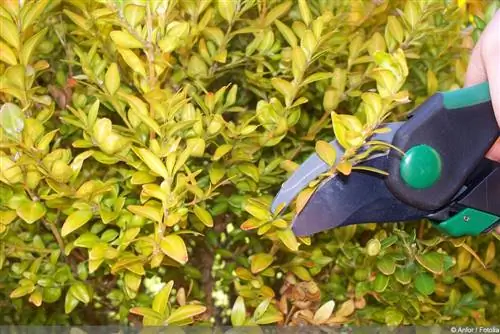
The latter has a very special meaning. Fungal spores are very often found in the soil, where they usually have ideal living conditions. If you remove individual parts of the plant at an early stage, it is of little use if the fungus can repeatedly penetrate the plant from the ground. The removal of the soil should be done extremely carefully to avoid injury to the sensitive roots. In this context, you can also check whether there is any root rot. The newly applied soil should have a large proportion of humus. The removed soil, which may be contaminated with fungal spores, must then be disposed of in the trash.
Note:
Soil infected by fungi may not be disposed of in the compost, nor should cut leaves, shoots and branches. The danger is too great that the fungus will attack the next plant.
Ultima Ratio
If the respective disease is already advanced, there is usually no salvation for the boxwood. Since it will inevitably die, it is recommended to remove it immediately. It is best liked completely. The roots must be dug up and the top layer of soil removed. All resulting material is disposed of in the trash or possibly burned. For safety reasons, you should not plant another boxwood in the affected area, but rather use other plants.

